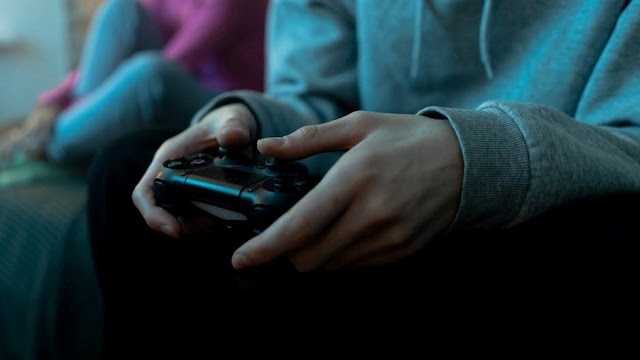The average gamer plays for around 8 hours and 27 minutes a week. This said, 25% of gamers say they play for more than 12 hours a week! Whether that’s battling it out in PUBG, getting lost in Cyberpunk, or exploring in Animal Crossing, that’s a lot of gaming!
If you’re feeling an ache, you might have a gamer's thumb. Don’t worry, though; we’ve got everything you need to know about a gamer’s thumb and how to treat it, as well as some helpful information on other gaming injuries.
Context
- What Is Gamer’s Thumb?
- What Are the Symptoms of Gamer’s Thumb?
- How to Fix Gamer’s Thumb
- Most Common Gaming Injuries
- Game Responsibly
What Is Gamer’s Thumb?
The medical terminology for gamer’s thumb is Quervain’s Tenosynovitis. It’s a bit of a mouthful, so you can see why people tend to call it gamer’s thumb instead! This association comes from the fact that many gamers suffer from this condition.
The condition itself is a repetitive stress injury. This causes inflammation of the tendons around the thumb, causing aches and pain.
Not only gamers can get the condition, anyone who spends long periods repeating the same motion with their thumb can. For example, people texting or typing for too long.
What Are the Symptoms of Gamer’s Thumb?
The most common symptoms of gamer’s thumb are:
- Pain around the thumb after gaming
- Pain that travels up your arm after gaming
- Pain in thumb or wrist that worsens with movement
- Clicking or popping sensation when you move your thumb
- Swelling near the base of your thumb
There are other less common symptoms. The best person to advise you on your discomfort is a medical professional.
Related: Top 10 Best Gaming Router For Xbox One X
How to Fix Gamer’s Thumb
For many mild cases of gamer’s thumb, these symptoms should only last a few hours after gaming. But without treatment, a gamer’s thumb can have long-term effects on dexterity and permanent tendon damage, so it’s important to get it treated.
The first port of call in fixing a gamer's thumb is pretty obvious — stop gaming. Give your thumb a break and stop gaming for a few days at least.
If you’re still feeling pain after this, other treatments for gamers thumb include:
- Physiotherapy exercises
- Surgery
- Anti-inflammatories
Splints and braces
There are many gamer’s thumb exercises that could help. But you must learn the proper technique from a medical professional before trying them yourself to avoid further injury.
It takes around six weeks maximum for most people to heal through a mix of rest and treatment. It’s best to avoid playing video games at all during this period.
Most Common Gaming Injuries
Gamer’s thumb isn’t the only injury you can get while gaming. In fact, it ranks third out of the top five most common gaming injuries.
- Neck strain: 86%
- Headaches and migraines: 84%
- Gamer’s thumb: 41%
- Eye strain: 32%
- Back strain: 20%
When a colossal 86% of gamers suffer from neck strain, it shows how important it is that we take care of our bodies when we game. Regular breaks, exercise, correct back support, and ensuring the room is lit well enough can all help with this.
Related: Top 10 Best Gaming Chair for Long Hours
Game Responsibly
Gamer’s thumb is a common gaming injury that, in most instances, can be treated with a mixture of rest and physiotherapy exercises. Make sure to take regular breaks when gaming and look after your wellbeing.
We have lots more helpful articles on all things gaming in our blog.

